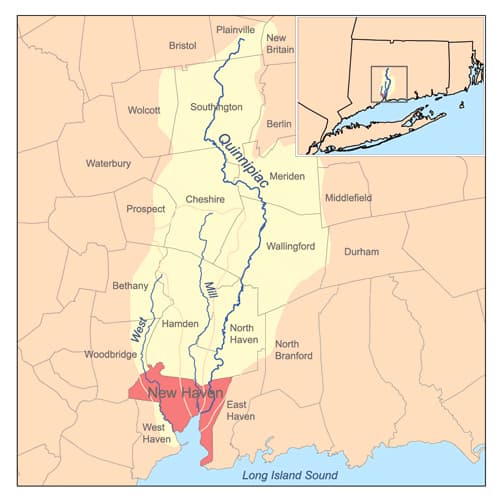The Quinnipiac River
The Quinnipiac River flows 38 miles from its headwaters in Plainville to its mouth in New Haven. The word Quinnipiac is derived from the people of the Algonquin tribes whose members hunted, fished, and traveled along the river for centuries. The term, roughly translated, means "long water land", possibly a reference to river's six-mile-long estuary. As a major river running through south central Connecticut, it links together more than 350,000 people living in diverse municipalities ranging from cities to suburban towns. Historically, the river held an abundant supply of wildlife and fish. Although the oyster industry dominated in the early 1900's, the estuary provided a habitat for other fish and shellfish.

The Quinnipiac River holds an historic place in Connecticut's history as the subject of the first pollution control measure in the state. During the 19th and 20th centuries, the river suffered from severe pollution problems because of the presence of heavy industry and population centers in its watershed. Contamination, occurring from the discharge of raw sewage from the City of Meriden, led to legislation in the late 1800s barring such discharge and ultimately led to the construction of the state's first sewage treatment plant. The pollution problem has improved by the passage of the Connecticut Clean Water Act of 1967, and by the Water Pollution Control Act of 1972, which provided the legal authority to take measures to clean up the river's watershed. The measures included the construction of advanced waste management facilities for sewage and industrial waste.

Comments: